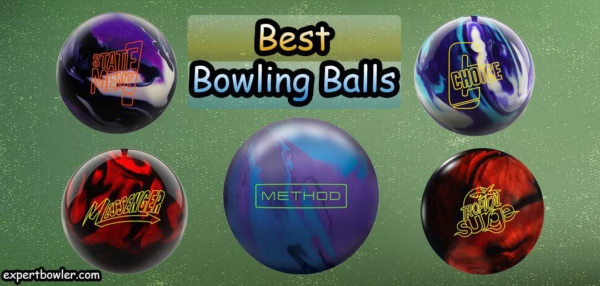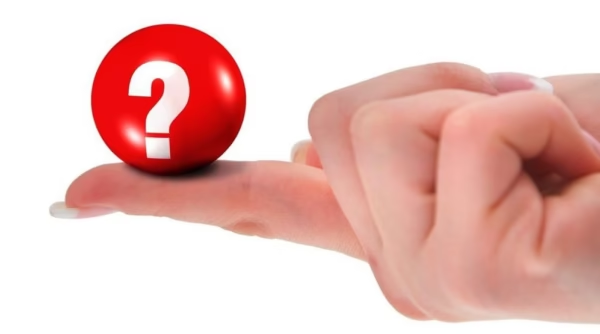Understanding the Different Types of Bowling Balls: Urethane, Reactive Resin, and Core Comparisons
Just like rackets, boxing gloves, and baseball bats, bowling balls can easily make or break one’s performance in their specific sport. This is why anyone who wants to improve their game should pay close attention to these items. With so many different types of bowling balls available, there are tons of things you should consider when shopping for these items. And to really find the right match for your skills and preferences, it’s imperative that you do your best to get acquainted with them.
The first thing that you should know about bowling balls is that they come in a wide variety of types. Each has its own special design and specification to better cater to different needs and techniques, so if you want to find the best one for you, it’s imperative to get to know each and every one of them.
Table of Contents

Bowling Ball Basics: Understanding Core and Coverstock Essentials
But before we look into the various types of bowling balls available in the market today, it’s important to note what sets them all apart. While all modern bowling balls are made of the same design with two parts, they tend to come in various materials and designs. Aside from the weight, these two parts are very important to consider if you want to find the right match for you. These two parts are the Coverstock and Weight Block.
The Coverstock is the outer shell of the ball. It is deemed as the most influential part of the ball in terms of hook potential; it’s the very part that gets in contact with the lane’s surface. They also come in different colors, styles, and even finishes.
The Weight Block, on the other hand, is the core of your bowling ball. It determines how the ball actually performs. If you want your ball to behave in a specific manner, you’ll need to pay attention to this part as it can dictate how fast it accelerates, where it rotates, and when it curves or hooks.
There are a few different types of bowling ball cores according to their design and construction. Each can perform differently, making it essential for you to be able to tell them apart.

What Is a Bowling Ball Made Of? Coverstock and Core Explained
With different Coverstock materials and Weight Block shapes and designs available, finding a specific bowling ball to match your needs and improve your performance can be tricky, but it can be done. If done carefully and prudently, you can also be sure to get the best results. The right ball can amplify your performance, which is definitely the point of getting your very own bowling ball.
So, what are the different types of bowling balls available today? Check out the quick guide below.
Coverstock Types: Understanding Polyester, Urethane, Reactive Resin, and Particle Materials
Plastic (Polyester): The Perfect Beginner-Friendly and Spare Ball Option
The most common Coverstock type today, because of its relative durability and low price, plastic or polyester bowling balls are considered entry-level varieties due to their smooth finish. It doesn’t have a lot of hook potential due to its harder and less porous material, but it’s very easy to control. Most house balls are also made from this material.
Urethane: The Versatile Mid-Range Performer for Intermediate Play
A good option for first-time bowling ball shoppers is the urethane coverstock material. This type is very easy to control, but with a higher hook potential, as it can create more friction between the ball and the lane surface. It’s also very durable with better pin action.
Reactive Resin: High-Performance Balls for Advanced Bowlers
If you want full control of your bowling ball, you should look for one with a reactive resin coverstock. They produce even more friction, offering higher hook potential and better pin action. They’re further classified into three types: reactive solid, reactive pearl, and reactive hybrid.
The most important thing to note about reactive resin balls is that they are true to their name. They react easily to the conditions applied to them. So if the lane conditions are poor or if the user commits a handling effort, it will easily translate to the ball’s direction and performance.
Particle (Proactive): The Aggressive Choice for Oily Lane Conditions
Made for advanced and expert bowlers, particle or proactive bowling balls have textured or “bumpy” surfaces, creating the most friction with heavily oiled lanes. They tend to dig, so they’re not exactly the easiest to use if you’re not well-versed in them.
Weight Block Types: Understanding Symmetrical, Asymmetrical, and Pancake Core Designs
Symmetrical Weight Blocks: Predictable and User-Friendly for Beginners
This type of core refers to two-piece bowling balls that have a low intermediate differential. They tend to have low flare potential, which can translate to less hook at the break point. Those who tend to bowl on drier lanes or throw low-speed balls will find these balls beneficial because of the smoother arc motion they offer. They’re also great as spare balls for those who can’t seem to have full control of their hooks to hit the pin they’re targeting.
Asymmetrical Weight Blocks: Advanced Performance for Aggressive Hook
Almost all drilled balls are considered asymmetrical balls to some point because of the greater weight distribution they have. These items naturally have spots that are heavier than others, offering more defined and angular motions.
Aside from having a higher intermediate differential, bowling balls with asymmetrical cores tend to respond faster to friction at breakpoints, increasing the hook that you can create. They also tend to help create a higher number of revolutions.
Depending on the coverstock material and lane condition, you can get more out of these bowling balls. With a more aggressive coverstock in a heavily oiled lane, you’ll get the most aggressive hooking balls, but in drier lanes with less aggressive coverstock, your ball with cover more distance to provide a more precise hook.
Pancake-Type or High-Mass Weight Blocks: Niche Designs for Specific Situations
Designed to prevent the ball from getting into a heavy roll, pancake or high-mass bowling balls have a thin layer of pancake or puddle-shaped weight block finished with a large amount of filler material. This makes one end of the ball heavier than the other, which can give it low track flare and hook potential.
Also considered as the traditional weight block type, pancake-type weight blocks are also classified by many as symmetrical balls.
Final Verdict: Your Best Bowling Ball Choice
If you’re asking yourself what type of bowling ball you should get, the answer here relies on your skills and techniques. Different bowling balls are crafted to cater to the needs and abilities of different bowlers, so there’s a high likelihood that you’ll find the perfect match for your bowling prowess. You’ll just need to know your playing style well, so you can nicely match it with the different bowling ball designs available.



I am 62 yrs old and have arthritis on my hands. What type of ball, holes and weight should I get?
One question. Is the polyester coverstock ball or the urethane coverstock ball better for bowling a straight ball to pick up spares? Thank you, Mark
Polyester coverstock would be good for straight bowlers. You should read these two articles- https://expertbowler.com/best-spare-bowling-ball-reviews/
https://expertbowler.com/best-urethane-bowling-ball-reviews/
If you bowl a straight ball it really doesn’t make a huge difference but I highly suggest throwing the heaviest ball you can comfortably.
If you curve a ball I’d suggest something symmetrical for sure because in my experience speed plays a big factor in the way my asymmetrical balls roll. Best thing to do is talk to your local pro shop and have them watch you bowl with a house ball and tell them what you would like to see. I can give you suggestions all day long but without seeing you bowl there’s no good answer
hi, ive been playing bowling for over a year now but never known my PAP. the pro shop guy just give me balls with mostly the same drilling patterns. now i have around 12 balls which i really dont know which is good for me. I need someones help regarding the best drill pattern is good for my way of releasing the bowling ball and help me choose the right ball for me.
thank you very much
What is the difference between women and men bowling ball?